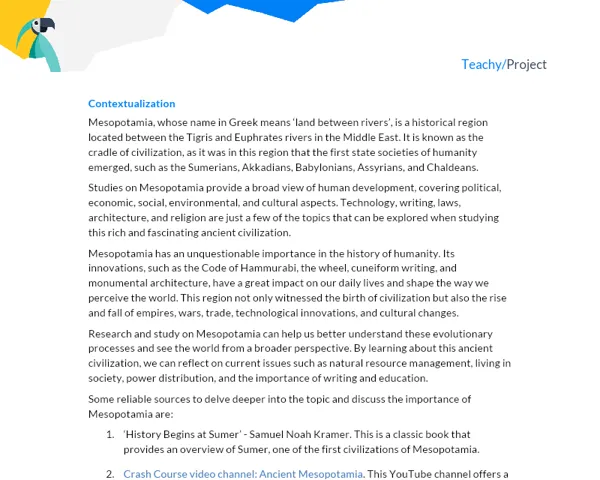Contextualization
Introduction
The French Revolution, which took place between 1789 and 1799, is considered one of the most important events in world history. This milestone not only overthrew the Old Regime in France but also triggered a series of political, economic, and social transformations that reverberated throughout Europe and beyond.
The movement, driven by the bourgeoisie and involving the participation of peasants and urban classes living in poverty, sought to restructure society and the state based on principles of liberty, equality, and fraternity. The French Revolution was a landmark in the fight against social injustices and was the bridge for the replacement of absolutist monarchies with liberal and democratic regimes.
In turn, the French Revolution used for the first time the concept of "citizenship," which included not only rights but also civil and political duties. This revolutionary concept had profound repercussions on later democratic movements and the conceptualization of human rights.
Contextualization
Studying the French Revolution is essential to understanding the functioning of modern societies, especially regarding the emergence of the concepts of democracy and citizenship. The global impact of this event, both immediate and long-term, is enormous.
The French Revolution is a valuable lesson about the collective power of the people. It shows that, under extreme circumstances, citizens are capable of fighting and changing the political and social structure of a nation. This is an extremely relevant theme today, as we see popular movements challenging the status quo around the world.
Practical Activity
Activity Title
"French Revolution: An Immersion into History"
Project Objective
This project aims to enhance students' understanding of the French Revolution through direct engagement with the subject. The activity will provide students with a deep understanding of the French Revolution, the causes that led to it, and its repercussions. To achieve this, students will place themselves in the shoes of the characters in this historical plot and recreate the setting of the time.
Project Description
Divided into groups of 3 to 5 students, the students will simulate the French National Constituent Assembly, representing different classes and groups that were present during the French Revolution. Each group will be responsible for representing the interests of their respective social class and debating relevant issues of the time.
The groups will be divided into representatives of:
- Bourgeoisie.
- Nobility.
- Clergy.
- Peasants and urban workers.
The students will have to deeply research the life, expectations, and challenges of each class during the French Revolution and bring their findings to the "Assembly." They should prepare to discuss and debate fundamental issues such as human rights, the role of the church, property rights, and the structure of the new government.
Necessary Materials
Internet access for research, history books, audiovisual resources for presentation (optional), period costumes and objects for the enactment (optional).
Step by Step
- Divide the class into groups of 3 to 5 students.
- Assign each group one of the four social classes to represent.
- The students should conduct thorough research on the class they represent. They should familiarize themselves with the conflicts, goals, and challenges of their respective class during the French Revolution.
- Each group should synthesize their research into a presentation that will be shared with the class during the "National Assembly." The presentation should include the viewpoints of their class, their expectations for the Revolution, and their demands for the new government.
- Simulate the National Constituent Assembly, where each group will present their research and debate the issues at hand. The discussions should be moderated by the teacher, who will assume the role of mediator.
- At the end, the students should draft a written document reporting the conclusions of the "Assembly."
Project Deliverables
Each group must deliver:
-
Report: A report containing the research conducted, the summary of the representation during the "Assembly," the conclusions of the "Assembly," and reflections on the process. The report should follow the structure of Introduction, Development, Conclusions, and Bibliography.
-
Presentation: A presentation containing the main points of their research and debate in the "Assembly." The presentation can be in any format the group prefers (e.g., slides, video, theater, etc.).
The report serves for students to practice writing academic texts as well as for the teacher to assess the understanding of the studied concepts. The presentation allows evaluating the students' ability to synthesize complex information and present it clearly and concisely.

